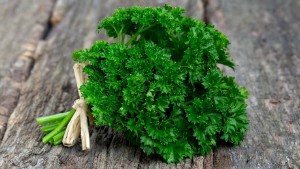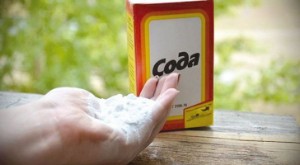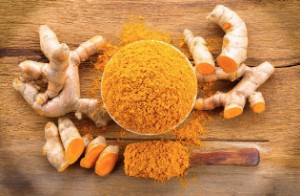Which foods lower hemoglobin in the blood — a list of the 7 best
 Elevated hemoglobin is a rather dangerous condition, which in 90% of cases indicates failures in metabolic processes occurring in the body.
Elevated hemoglobin is a rather dangerous condition, which in 90% of cases indicates failures in metabolic processes occurring in the body.
It may also mean that tissues and organs are experiencing oxygen starvation, and increased hemoglobin is a protective reaction of the body to a decrease in the amount of micronutrients received.
Anyway, according to research , in most cases, it is possible to lower hemoglobin levels in men and women with the help of a specialized diet. What are the best products to reduce it? And which ones, on the contrary, should not be consumed?
Content
When does hemoglobin need to be reduced?
In most cases, an increase in hemoglobin levels in adults is supplemented increased blood viscosity due to a violation of water-salt metabolism. And thick blood leads to an increased risk of blood clots, plaques, and clotting also increases. All this can be supplemented:
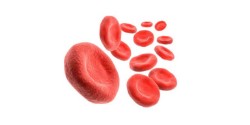
- Hypertension (by raising blood pressure to a critical level);
- Thrombosis (if blood flow slows down to the point where blood literally clots in some vessels);
- Heart attack (if thrombosis affects heart muscle or the blood vessels feeding it);
- Stroke (if thrombosis affects the circulatory system of the brain );
- Atherosclerosis (when cholesterol plaques form on the walls of blood vessels, thereby impeding normal blood flow).
At the same time, an increase in hemoglobin may indicate pathologies in metabolic processes when the body receives insufficient oxygen and other micronutrients.
Also, hemoglobin and red blood cells naturally increase in smokers, since they inhale smoky gas while smoking. It, in turn, creates inseparable compounds with hemoglobin, thereby deactivating the molecule. In these cases, it is not necessary to reduce the level of hemoglobin, since the body will experience constant oxygen starvation.
It is also not uncommon for hemoglobin to rise in the summer or with regular physical exertion, when the body actively loses water and minerals (along with sweat). But it is quite simple to normalize the concentration of hemoglobin in this case – you need to drink as much water as possible (in summer – from 3 liters or more).
General rules of nutrition
With elevated hemoglobin, nutritionists recommend following the following tips and recommendations:

- Eat foods and dishes rich in calcium. This element reduces the bioavailability of iron. That is, it slows down its assimilation. Namely, iron is the main component of hemoglobin and it is with its help that oxygen and carbon dioxide are transported to/from the lungs.
- Exclude foods rich in vitamins from the diet 12 and In 9 . This will also help reduce the bioavailability of iron, slow down the generation of new hemoglobin molecules.
- Exclude iron-rich foods from the diet. These include apples, greens, beef, pork, meat offal (liver, lungs, heart), fish. Preference should be given to cereals (with the exception of buckwheat), dairy products, and pasta. The diet for each patient should be prepared individually by a nutritionist.
If we are talking about infants, then mother's milk helps them to normalize hemoglobin. If artificial feeding (mixtures) is used, then you should consult a pediatrician on this matter – he will recommend such mixtures containing a minimum of iron and B-group vitamins.
7 products to lower its level
A slight increase in hemoglobin can be leveled by changing the diet. It is enough to include a list of products that slow down the absorption of iron, as well as inhibit hematopoietic function. But it must be borne in mind that it is forbidden to follow such diets for a long period. Moreover, in this case, it is necessary to donate blood at least once a week for analysis to establish the norm of hemoglobin, so as not to provoke its decrease below the permissible level.
1. Fermented milk products
 Almost everything dairy products
contain large amounts of calcium, which slows down biochemical processes with iron,
inhibits hematopoietic function
.
Almost everything dairy products
contain large amounts of calcium, which slows down biochemical processes with iron,
inhibits hematopoietic function
.
Sour cream, cottage cheese are especially effective in this regard (it is better to give preference to the one with a high fat content), cheeses. Goat's milk and products based on it can also be included in this group.
Many fermented dairy products contain a lot of casein – it thickens the blood, increases sugar levels. In some cases, this exacerbates the course of diseases of the cardiovascular system, so it is recommended to consult a cardiologist beforehand.
2. Cereals (especially rice)
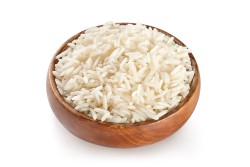 With the exception of buckwheat – lowers hemoglobin, slow down the absorption of iron
. At the same time, they contain a minimum of glucose (carbohydrates), they contain fiber.
With the exception of buckwheat – lowers hemoglobin, slow down the absorption of iron
. At the same time, they contain a minimum of glucose (carbohydrates), they contain fiber.
This is one of the best options for reducing hemoglobin, and at the same time, cleaning the intestines.
Rice groats contain a whole range of tannins that indirectly thicken the blood. If you eat rice, then you should give preference to the one with a minimum of starch.
3. Fruits
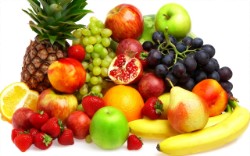 You can freely include all fruits in your diet, just not red ones (as well as carrots and apples). Pears, plums, gooseberries, currants (white), black barberry are perfect.
You can freely include all fruits in your diet, just not red ones (as well as carrots and apples). Pears, plums, gooseberries, currants (white), black barberry are perfect.
You can also use them in the form of drying, then the concentration of carbohydrates (more precisely, fructose) in it is several times higher than in fresh fruits, so they may be contraindicated in diabetes mellitus.
4. Legumes
 Vegetables such as peas (of all varieties, both fresh and dried, steamed, canned) can also be included here.
Vegetables such as peas (of all varieties, both fresh and dried, steamed, canned) can also be included here.
Although legumes contain a small amount of iron, they contain many times more tannic components (for example, tannin). And they are just reduce the bioavailability of iron .
But at the same time, the same bean has a sugar-lowering effect, which eliminates the increase blood viscosity . Nutritionists recommend using legumes in combination with butter or melted butter – this is a very satisfying dish, while reducing hemoglobin instantly.
5. Low-fat meats
 In particular, chicken fillet contains almost no iron. And at the same time, it is considered a dietary product recommended for use in chronic diseases of the cardiovascular system.
In particular, chicken fillet contains almost no iron. And at the same time, it is considered a dietary product recommended for use in chronic diseases of the cardiovascular system.
It is chicken breast that should be eaten, but not fried, but boiled or baked, without adding vegetable oil (you can use butter or melted in small amounts).
By the way, due to the high content of protein compounds, chicken fillet accelerates the regeneration processes of smooth muscles (the walls consist of such fibers of blood vessels ), which will help to rehabilitate faster after a heart attack, stroke (in the absence of irreversible processes in the body).
You can also eat the breast of any other poultry, game is also a great option. The main thing is that the meat should be low–fat and it should be subjected to careful heat treatment.
6. Black tea
 Green can also be included here, but it is less effective precisely for normalizing concentration. Decrease in hemoglobin is achieved by tannin
, which is quite a lot in black tea.
Green can also be included here, but it is less effective precisely for normalizing concentration. Decrease in hemoglobin is achieved by tannin
, which is quite a lot in black tea.
It also contains caffeine and antioxidants. Herbal teas are not suitable, but you can add mint in small quantities.
7. Pasta
 Only those that are not prepared from whole grain flour are good at reducing hemoglobin. Pasta can be prepared independently at home, adding a small amount of starch to it (used for faster thickening).
Only those that are not prepared from whole grain flour are good at reducing hemoglobin. Pasta can be prepared independently at home, adding a small amount of starch to it (used for faster thickening).
But you should not abuse it either – if only flour–based products are present in the diet, then this will clearly provoke a gastrointestinal disorder, constipation, in which a whole range of metabolic processes is disrupted - all this can indirectly increase the concentration of hemoglobin.
What should be excluded from the diet?
For greater efficiency, when following a diet, foods that cannot be eaten with elevated hemoglobin are necessarily excluded from the diet:
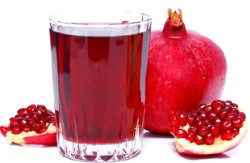
- Fatty meat. Beef, pork, and meat offal (liver, lungs, heart, kidneys, and so on) are especially "dangerous". Meat is rich in iron , as well as B-group vitamins (therefore, iron from such products is easily digested).
- Pomegranate and pomegranate juice. Pomegranate increases hemoglobin , as well as blood pressure. With hypotension, it is extremely useful to include it in the diet, but with increased blood viscosity, it should be completely excluded.
- Fatty fish varieties . Are rich in omega-3 acids, which accelerate the course of most intercellular metabolic processes. Their use should be minimized. Other seafood can also be included here, including oysters, shrimp, red and black spark, and seaweed.
- Chicken eggs . Or rather, it is the yolks (but the proteins – slightly, but still reduce hemoglobin). It is also better to exclude quail from the diet.
- Spices. Especially Turmeric strongly increases hemoglobin (it contains not only iron, herbs (parsley, dill, basil), but also B-group vitamins). It is better to temporarily stop using them altogether.
- Cherries and cherries. These berries raise hemoglobin levels is no worse than pomegranate and pomegranate juice.
Other recommendations
Doctors with elevated hemoglobin also recommend:
- Minimize physical activity. This will help to normalize the water-salt balance, reduce blood pressure, blood viscosity.
- Drink as much water as possible. And most importantly – without gas, since the carbon dioxide contained in such water slightly increases the bioavailability of iron (due to stimulation of the mucous membrane of the gastrointestinal tract).
- Refusal of multivitamin complexes. It is especially important to exclude the intake of B-group vitamins.
Interesting video
And now we invite you to familiarize yourself with the video:
Conclusion
In total, it is quite possible to lower hemoglobin by adjusting the diet. It is not recommended to follow such a diet for a long time, while blood should be tested weekly to determine the concentration of iron in the blood.
The optimal diet will be helped by a nutritionist (taking into account the individual physiology of the patient, the nominal blood sugar level). In the event that the diet does not help to normalize the condition, then drug therapy is prescribed aimed at inhibiting hematopoietic function (hormonal drugs can often be used for this).


